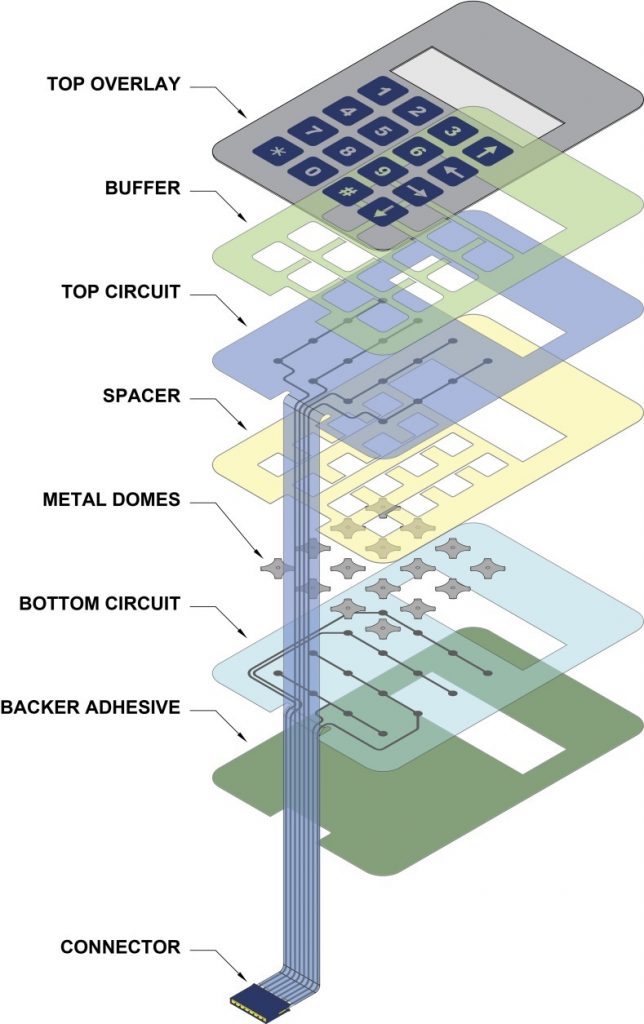What are the Internal Layers of a Membrane Switch?
We all know about the graphic overlay layer which is the top surface of the keypad that always gets the most attention (and rightfully so). But what’s going on behind the scenes in the sub-assembly of the membrane switch? Let’s find out.
Dome Retainer Layer
The dome retainer layer is somewhat self explanatory. The primary function of this layer is hold the metal domes in place and position. It is typically manufactured from polyester film material.
Spacer Layer
The spacer layer is used to created a break in contact between the two conductors of the switch. This allows the switch to have its open position. The spacer design typically includes vents or channels to prevent air entrapment in the layers when the keys are pressed or actuated.
Circuit Layer
The circuit layer is the electrical aspect of a membrane switch where the conductive traces are applied using one of the two main methods of application: screen printing and photochemical etching.
- Screen Printing or Printed Silver Circuitry: Silver conductive ink is flooded on the stencil placed above a substrate (typically polyester film).
- Photochemical Etching or Copper Flex Circuitry: Copper laminated substrate is selectively created through photolithography and a chemical etching process.

